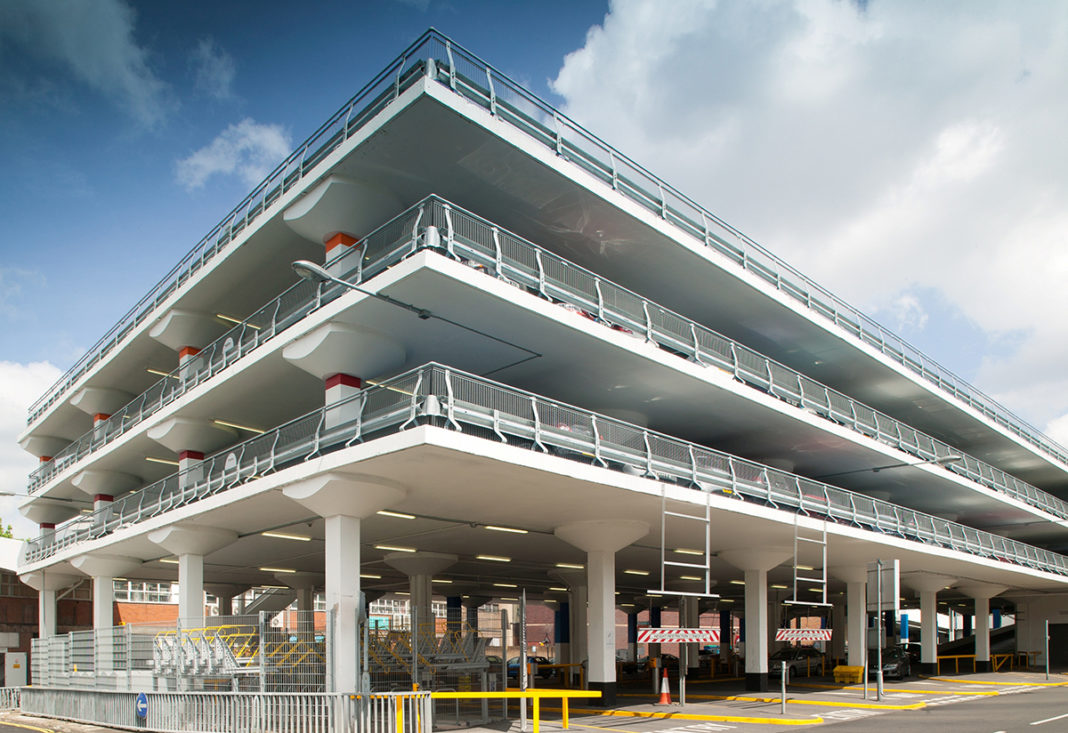
By Steve Dunn, managing director of car park construction specialist Berry Systems
WHEN it comes to multi-storey car parks, the quality of edge protection can mean the difference between simply damaging the bodywork of your vehicle with an embarrassing bump, or a potentially tragic accident.
The cost of edge protection represents a significant component in the expense of building a new car park and warrants careful consideration. But equally important is whether existing edge protection in an ageing car park is still fit for purpose.
‘The Inspection and Maintenance of Multi-Storey Car Parks – Interim Guidance’ from The Institution of Civil Engineers recommends that at least one installation compliance test should be carried out on each car park at least every 16 years, in conjunction with structural appraisals.
This compliance test is vital to ensure that the car park, including edge protectors, not only continues to meet required standards, but will highlight potential dangers if they haven’t been installed to the correct specification in the first place.
We’ve all seen those terrifying photographs and videos of cars hanging out of multi-storey car parks. And in the worse cases, plummeting to the ground.
In one instance, a 51-year-old woman was fatally injured in Abu Dhabi in 2015 when she accidentally reversed off the sixth floor of a multi-storey car park. The inquest into the incident found that the concrete and metal barrier protecting cars from the edges had been built 16.68cm shorter than the original designs, meaning they were only 90cm high.
The investigation also showed that the barriers should have been 110cm further in from the edge than they had been positioned. This accident would have been avoided if the necessary checks had taken place.
It’s essential that the vehicle restraint system will maintain its structural integrity against a simple driver error, such as putting a car into first gear instead of reverse and pressing too hard on the accelerator, leading to a collision with a barrier or column.
An installation compliance test will ensure that the following principles are met:
• The vehicle restraint should resist the specified applied force, without failing catastrophically
• It should not deflect by more than the clear distance between its original position and any obstacles
• Barriers providing pedestrian restraint should not deflect beyond the edge of the deck
• Any fixing bolts that the vehicle restraint relies on for support should not fail or pull out. Bolts designed to locate the vehicle restraint beam may fail, provided the beam derives further support in a fail-safe configuration
• Deformation of the vehicle restraint beyond repair is acceptable, provided it cannot lead to progressive collapse. However, it must be replaced if damaged.
The BS EN 1991-1-1 standard, which gives best practice design guidelines and actions for the structural design of buildings and civil engineering works, states specific requirements for perimeter vehicle restraint systems.
For car parks designed to carry vehicles whose gross mass does not exceed 2,500kg, vehicle restraints should effectively contain a single impact from a 1,500kg car travelling at approximately 10mph (4.5m/s) at an angle of 90 degrees. Under these conditions, the post should not catastrophically fail and fulfil the priority of containing the vehicle within the prescribed deflection zones, protecting pedestrians and assets.
In the case of floor mounted vehicle restraint systems, careful consideration needs to be given to the condition of the substrate and performance standards required as loading criteria can vary, with the capacity of each system directly correlating to the loading.
Car park construction specialists Berry Systems, with more than 45 years’ experience in the industry, has launched CP-DAS – the Car Park Design Advisory Service, offering expert advice and consultation to architects, specifiers and contractors.
Safety is paramount when it comes to structural design but ensuring that buildings adhere to regulations can be a minefield.
That’s one of the reasons that we launched CP-DAS in order to provide guidance across all systems and sectors.
Not only are we able to assess the suitability of existing car park structures and vehicle restraint systems but we specialise in refurbishment, car park design, planning modular parking and facades. Our highly experienced team provide practical solutions so that customers benefit from our whole range of expert knowledge and consultancy services.
It’s a fact of life that accidents do happen. But when they do, it’s vital that every measure has been taken in order to protect the safety of both drivers and pedestrians.











